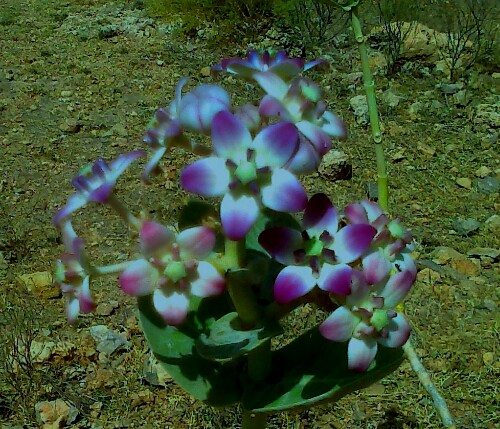Common Indian Name of Aakban – AKDA, AAK.
Botanical Name – Calotropis procera
Family – Asclepiadaceae
Indian Desert
This is essentially sandy desert with few stony areas in between. It is spread over 3 states viz. Rajasthan, Gujarat, Haryana in western India having total 3.21 lakh sq. km area. But 61% of desert area is covered in the state of Rajasthan.
Aakban : Location and Description
This plant is native of tropical and subtropical region of Asia-Africa. It is observed mostly in western, central part of India, and neighbouring countries located to the west of India. It is also common in desert of NW India. It is part of xerophytes group. In our country 2 species are found viz.
Callotropis procera, Callotropis gigantean. This piece is about C.procera.
The plant of Aakban has slender appearance, it grows to a height of 2.0 to 2.5 mts. It has light green coloured large leaves. The bloom time is generally November to April. It has beautiful flowers of various colours like white, purple and blue. During bloom time, the plant gives beautiful accentuates the beauty of otherswise dry desert topography.
Medicinal properties
Aak is part of our cultural folklore. The details of the plant is available in old mythological-historical-Ayurvedic literature. Traditional knowledge handed down over the years tell us that extracts of Aak leaves are useful in treating diseases like arthritis, rheumatism, inflammation, pain and infection in ears. The plant leaves when crushed, yield a sticky milky substance having pungent smell and bitter taste. This milky substance also known as latex is said to be poisonous in nature as it contains Callotropin.
The flowers of Aakban are directly consumed as an effective anti venom against snake bites. Recent researches by some botanists and pharmacologists in India have revealed that the plant leaves extract contains ascorbic acid, Callotropin, Callotoxin, calcium oxalate. Roots have glycosides which has cytotoxic activity. Plant leaves extract also has mosquitoidal properties.
Warm leaves with oil are applied to relieve pain in abdomen. Plant leaf extract is also applied on soles of human feet to control sugar levels.
Survival of the plant is also due to facts that because of its poisonous nature many grazing animals do not touch it.
Religious significance of Aak Plant
In Indian context this plant has some religious significance too. The Hindu devotees of lord Shiva offer flowers and leaves in temples during regular POOJA schedules as well as on Maha Shivratri day.

UNDERTAKING
I, RAKESH G.GOSWAMI, RESIDENT OF JODHPUR,RAJASTHAN HERE BY GIVE THE UNDERTAKING THAT ALL MATERIAL IS THIS SUBMISSION IS BASED ON MY OWN FIELD WORK AND RESEARCH OVER LAST 20 YRS.ALL FACTS AND FIGURES ARE CORRECT TO THE BEST OF MY KNOWLEDGE.I AM SOLELY RESPOSIBLE FOR ANY OMMISSIONS, ERRORS IF ANY.
Note:- The facts mentioned in this article are for information purpose only. Such facts can not be treated as substitute for expert medical advice. Kindly contact your physician before consuming any part of this plant for curing any disease.
Text and Images are By Rakesh Giri Goswami
Jodhpur, Rajasthan
Do Not Miss Reading:
Know the Health Benefits Of Nilgiri Tea ( Black Tea )



